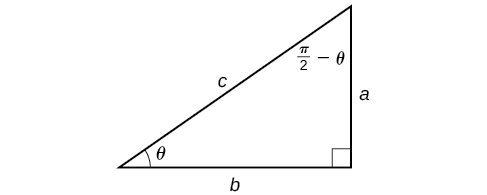| << Chapter < Page | Chapter >> Page > |
For any trigonometric function, for all in the proper domain for the given function. This follows from the definition of the inverse and from the fact that the range of was defined to be identical to the domain of However, we have to be a little more careful with expressions of the form
Is it correct that
No. This equation is correct if belongs to the restricted domain but sine is defined for all real input values, and for outside the restricted interval, the equation is not correct because its inverse always returns a value in The situation is similar for cosine and tangent and their inverses. For example,
Given an expression of the form f −1 (f(θ)) where evaluate.
Evaluate the following:
Now that we can compose a trigonometric function with its inverse, we can explore how to evaluate a composition of a trigonometric function and the inverse of another trigonometric function. We will begin with compositions of the form For special values of we can exactly evaluate the inner function and then the outer, inverse function. However, we can find a more general approach by considering the relation between the two acute angles of a right triangle where one is making the other Consider the sine and cosine of each angle of the right triangle in [link] .

Because we have if If is not in this domain, then we need to find another angle that has the same cosine as and does belong to the restricted domain; we then subtract this angle from Similarly, so if These are just the function-cofunction relationships presented in another way.
Given functions of the form and evaluate them.

Notification Switch
Would you like to follow the 'Precalculus' conversation and receive update notifications?